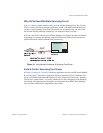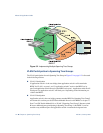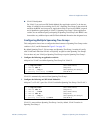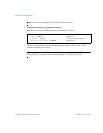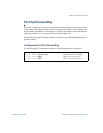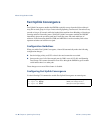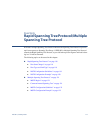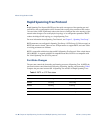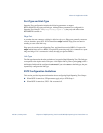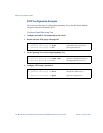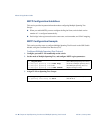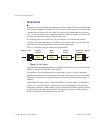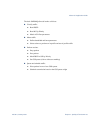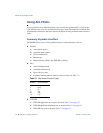Alteon OS Application Guide
Chapter 6: Rapid Spanning Tree Protocol/Multiple Spanning Tree Protocol
11942C4911, January 2007
Port Type and Link Type
Spanning Tree configuration includes the following parameters to support
RSTP and MSTP: edge port and link type. Although these parameters are configured for
Spanning Tree Groups 1-128 (/cfg/l2/stg x/port x), they only take effect when
RSTP/MSTP is turned on.
Edge Port
A port that does not connect to a bridge is called an edge port. Edge ports generally connect to
a server, therefore, ports INT1-INT14 should have edge enabled. Edge ports can start for-
warding as soon as the link is up.
Edge ports do not take part in Spanning Tree, and should not receive BPDUs. If a port with
edge enabled does receive a BPDU, it begins STP processing only if it is connected to a span-
ning tree bridge. If it is connected to a host, the edge port ignores BPDUs.
Link Type
The link type determines how the port behaves in regard to Rapid Spanning Tree. The link type
corresponds to the duplex mode of the port. A full-duplex link is point-to-point (p2p), while a
half-duplex link should be configured as shared. If you select auto as the link type, the port
dynamically configures the link type.
RSTP Configuration Guidelines
This section provides important information about configuring Rapid Spanning Tree Groups:
When RSTP is turned on, STP parameters apply only to STP Group 1.
When RSTP is turned on, STG 2-126 are turned off.



